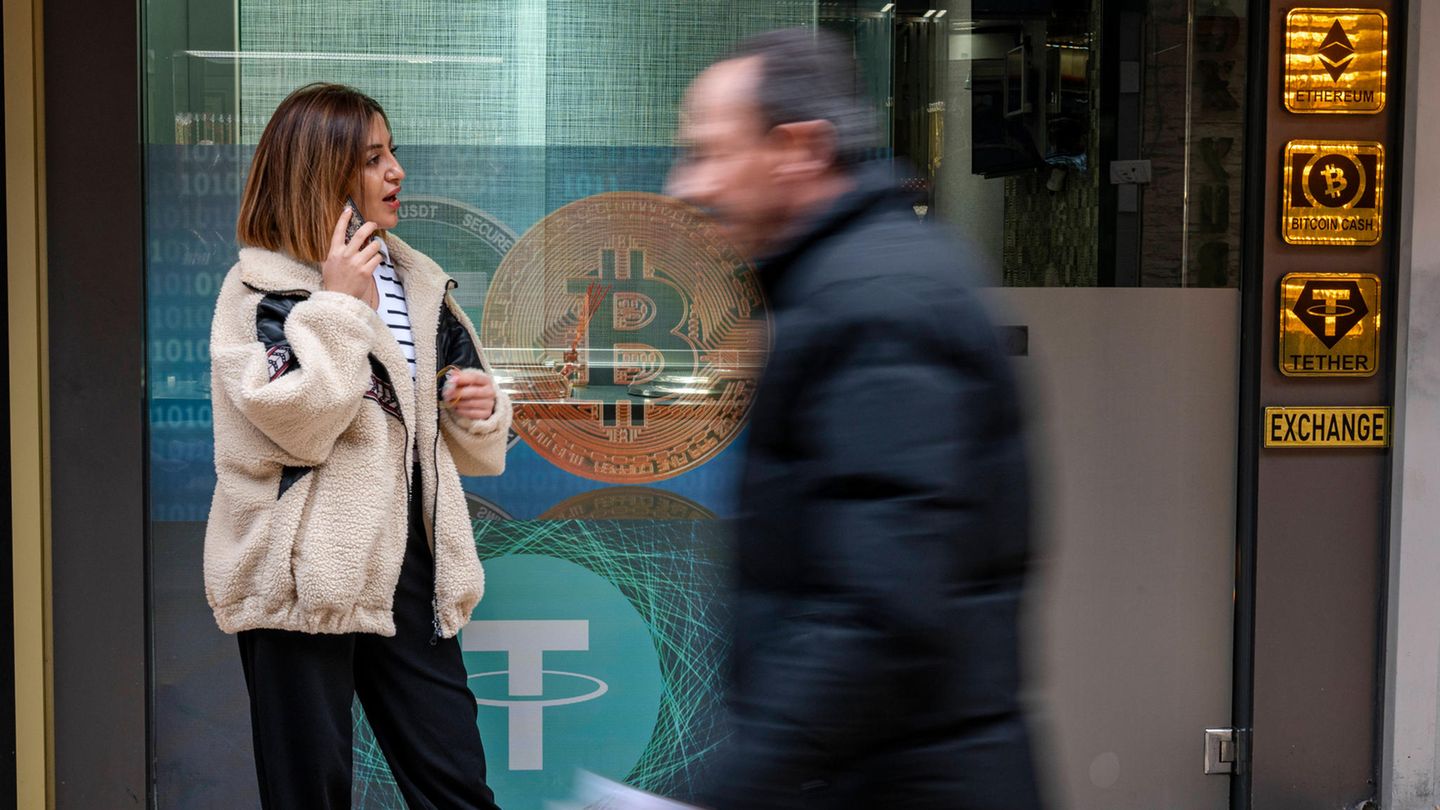Bitcoin has broken the 60,000 euro mark. Ha Duong is portfolio manager of BIT Global Crypto Leaders. In the interview he explains the steep rise in Bitcoin – and what that means for small investors.
This article is adapted from the business magazine Capital and is available here for ten days. Afterwards it will only be available to read at again. Capital belongs like that star to RTL Germany.
Mr. Duong, the BitcoinThe price has broken the 60,000 euro mark. Since the beginning of the year alone, it has increased by 54 percent. What are the reasons for this?
I would name three things: the crypto cycle, the positive momentum from spot ETFs and the upcoming Bitcoin Halving.
Then we start with that Crypto-Cycle.
We have put the painful sell-offs behind us since the end of 2022. After that, almost exclusively long-term investors remained. Everyone else has left the market in the meantime. So there was a cleanup. And this adjusted market has left behind a significantly more constructive environment, which has now made the cyclical upswing possible. In addition, the regulatory pressure has eased and we have seen an overall increase in confidence in the ecosystem through legal successes in the crypto industry and through the departure of bad market players, such as FTX around Sam Bankman-Fried. There was also the announcement of the Bitcoin spot ETFs, which contributed greatly to the positive market dynamics.
Since January, the American Securities and Exchange Commission (SEC) has allowed providers like Blackrock to ETFs on the Bitcoin. Why was that so important?
The approval of spot ETFs is a kind of accolade, as it also establishes and anchors digital assets in traditional financial systems. We have entered a phase in which institutional investors see a lower reputational risk in crypto. As a result, more and more people have priced in greater future success – which has caused prices to rise. This was then reinforced by the fact that not only Blackrock started, but also Fidelity and other ETF issuers. And now we are in a situation where we are seeing reliable and massive inflows for the first time ever.
So you’re saying the ETFs are a huge success?
Yes, we are seeing days of $500 million to $600 million in inflows per day. You would never have expected that in advance. BlackRock will probably manage ten billion dollars in the first quarter after launch. This shows how strong the demand is from customer groups that were previously unable to invest in this asset class.
Ha Duong (32) is manager of the BIT Global Crypto Leaders fund at BIT Capital.
Some experts are more skeptical and say that investors have shifted their money primarily from other cryptoassets into the ETFs. For example, Grayscale, which has converted its fund into an ETF – but charges high costs. Customers simply switched to cheaper competitors.
Yes, that is part of the truth. But it is also clear that this does not explain all of the inflow of capital. With almost $8 billion in net inflows, there must also be new customers. Mind you, we are talking about net inflows here, i.e. cash inflows minus cash outflows, which totaled 8.4 billion. One should not underestimate how enormous the distribution power of Blackrock and Co. is.
Who are the new customers?
These are primarily institutional investors. This also explains why significantly more people do not search for Bitcoin & Co. on search engines like Google. Many institutional investors have wanted to invest in crypto for a long time, but were unable to for practical and regulatory reasons. In Europe this has been possible for a long time with ETPs, in Canada with ETFs. But in the USA, where a large part of the money is located, this was not possible until recently. That’s why the USA is also the current driver.
Why is the hype among private investors less this time than in other bull phases?
It’s important to remember that many private investors were probably in the red until recently. This is the typical loss aversion. Only when you see green numbers in your portfolio again do you start talking about it. And there’s still a long way to go before the typical retail investor makes a significant profit and becomes active again. Even due to the increased speculative trading in smaller altcoins in the last cycle, it will still take time until losses are neutralized and private investors have overcome their psychological pain.
Are classic crypto exchanges such as Bison, Coinbase and Binance among the losers in this development? Because institutional investors invest in ETFs and private investors will be cautious for a longer period of time – and then also buy ETFs?
No, I see ETFs and crypto exchanges in peaceful coexistence. I think it’s unlikely that Blackrock will one day launch ETFs for 20,000 different cryptos. We will likely see an ETF on major cryptoassets in the next two years. However, the vast majority will then fall below the necessary size – while at the same time they still make up a large part of the volume on stock exchanges. And from a technical perspective alone, it is necessary for Coinbase & Co. to take over the issue of custody – i.e. security.
However, a not insignificant proportion of investors remain with Bitcoin. What other argument is there for trading these via traditional stock exchanges?
I would question that. Bitcoin now accounts for less than 50 percent of trading volume. Depending on the order volume, you have a one-off fee of around 1 to 2 percent. Anyone who buys a Blackrock ETF has annual fees and a spread on transactions that is often forgotten. Fundamentally, there is also a question of conviction: If you want to hold Bitcoin as a hedge against a possible failure of the financial system, you should of course not buy ETFs.
We’ve talked a lot about Bitcoin now. But not only has its price risen steeply, but also that of other cryptocurrencies such as Ethereum and Solana. Does this also have something to do with the Bitcoin ETF?
Indirect. We have watched the market anticipate the Bitcoin ETF for half a year. That alone has driven up the prices. And now that we see that there are real inflows of funds, expectations have been confirmed. There is also, in a way, an anticipation of, for example, the Ethereum ETF. It doesn’t surprise me at all that the markets are seeing such momentum for other cryptocurrencies too. There are also always rotations within crypto.
Let’s come to the third reason mentioned – the so-called Bitcoin halving. From April 21st, miners will only be paid half of Bitcoin for their work. Because supply becomes scarcer, the price rises. Hasn’t the effect been priced in for a long time?
We think not, because the markets are usually more short-term oriented. Even though the halving is such a well-known event, we assume that it won’t really be priced in until a month in advance. But we are currently in this process – and that is of course also driving the price up.
However, the crypto euphoria could also die down again if new scandals come to light. How clean is the market in your opinion?
The fact that people want to cheat to get money is nothing new. There will always be that. But crypto is an open technology that anyone can use. First of all, this makes it easier for fraudsters. I believe that the attention in recent years – including from the regulatory side – has contained a lot of potential damage. The users have also become smarter. According to ChainAnalysis’ new report, only 0.34 percent of crypto transaction volume is due to illegal activity. With cash we are between three and four percent. So I think crypto is being unfairly pilloried in this discussion.
Source: Stern




